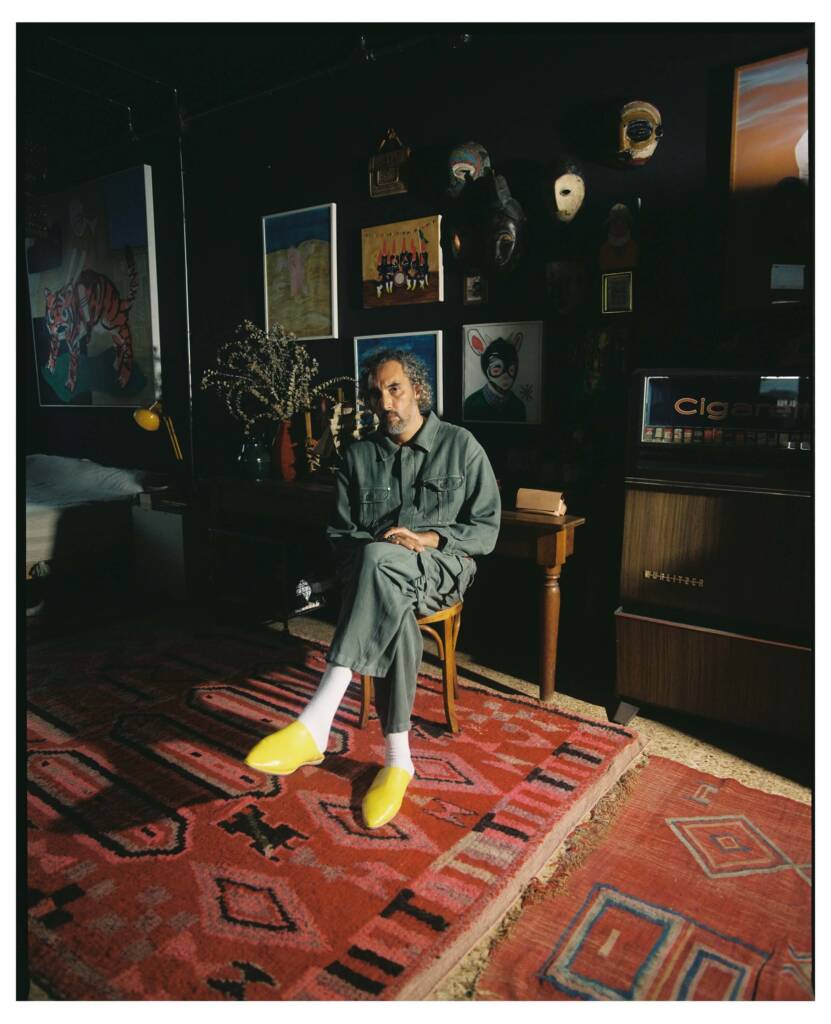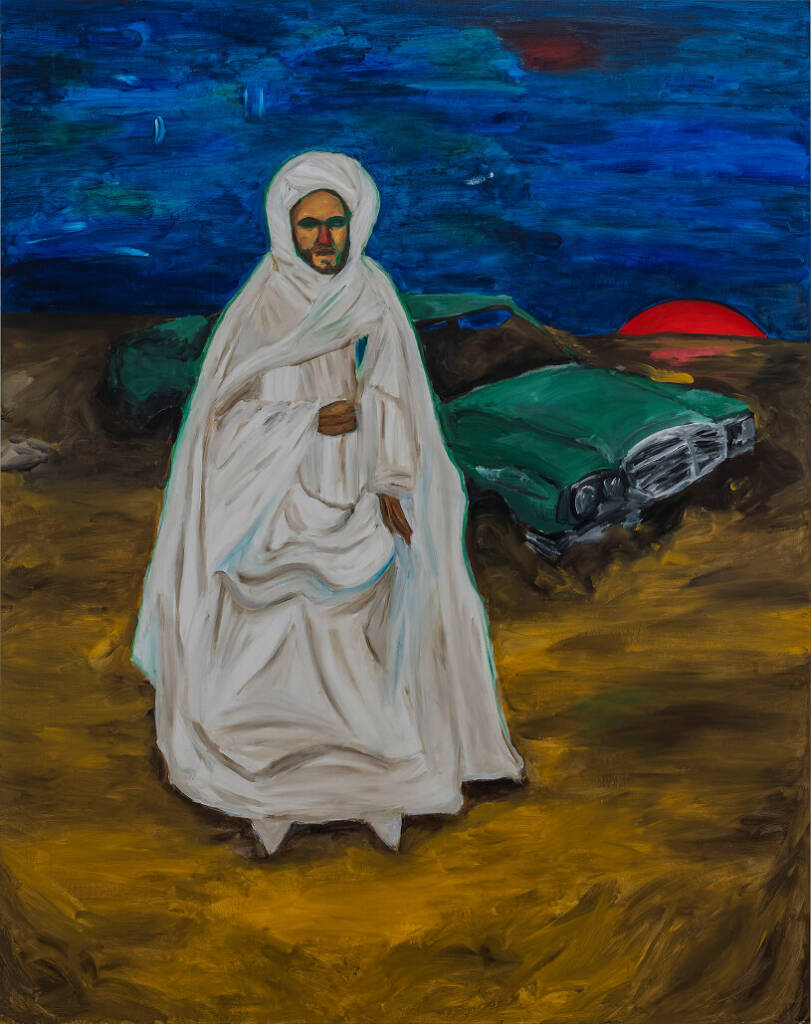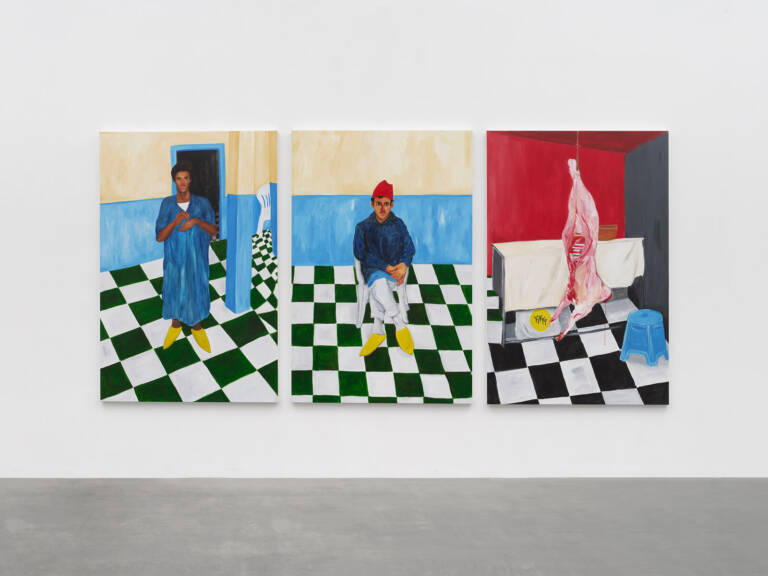
Photography by DANI PUJALTE

Sirr, 2023, Acrylic on Canvas, 200 x 160 cm
Courtesy of THE THIRD LINE
Anuar Khalifi, a self-taught artist working between Tangier and Barcelona, paints as if emerging from a dream. His work is currently featured in Finding My Blue Sky, a group exhibition curated by Dr. Omar Kholeif, on view at London’s Lisson Gallery through July 26. Framed as a love letter to London, the show drifts through Kholeif’s dreamscapes—canvases that weave together memory, longing, and place. His pieces read like lines from that letter, shaped by the in-between of Spain and Morocco, threaded with recurring symbols and personal mythologies.
In this interview, hube speaks with Khalifi about the new show, the transcendental texts that ground his practice, and how he keeps the work alive—rooted firmly in the present.
hube: Your work often blends tradition with a contemporary gaze. Growing up between cultures, especially with your Moroccan heritage, how do you define “belonging” as an artist? Is it rooted in a physical place, a cultural memory, or something more fluid and evolving?
Anuar Khalifi: For me, belonging encompasses all those facets, as well as the transcendent—it connects the past with the present and the future. Fixed belonging to a space, especially one that is hostile, can become a trap. That’s why we have historical records of the past and imagination, which propel us forward (into the future). For me, painting encapsulates all of that, acting like a pendulum that constantly swings back and forth. The physical place, as a landscape in flux, is also part of this motion.
h: How do you see the artist’s role today: a witness, a catalyst for change, or a dreamer who transcends reality?
AK: We are all witnesses. The artist attempts to synthesize glimpses of something as overwhelming as nature or the human condition, either revealing hidden truths or veiling distractions in that process. Those who dream while they are awake are undoubtedly catalysts. Change is internal; if that change happens, it transforms your surroundings. In Sufi or Islamic tradition, continuous inner change is encouraged.
h: Your characters seem suspended between centuries—are they memories, metaphors, or something else to you?
AK: They are part of the stage where my search unfolds. Symbols are things we choose collectively, which is why they’re recognized by people who inhabit the same existential space. In my case, memories often bring forth elements I didn’t know resided within me, manifesting in various forms.
The search cannot move only forward; the tools to navigate the future lie in the past and present. But symbols have no meaning in isolation—a single symbol can contain thousands of words in its definition. Then there are things that simply appear beautiful and take on meanings that form a personal cosmology.
h: What does Finding My Blue Sky mean to you personally? Do you feel that painting allows you to construct your own sacred space—one that resists or transcends borders?
AK: There are no borders or edges in the sky; it is in constant change. My blue sky is between Tangier and Barcelona. The most perfect blue sky is in Tangier, perhaps because of how you feel it in such a dramatic frontier—the Strait of Gibraltar, a border drawn by man and sea. I absolutely believe painting sets me free. I can do what I do under any circumstances, and I have control over the narrative.

